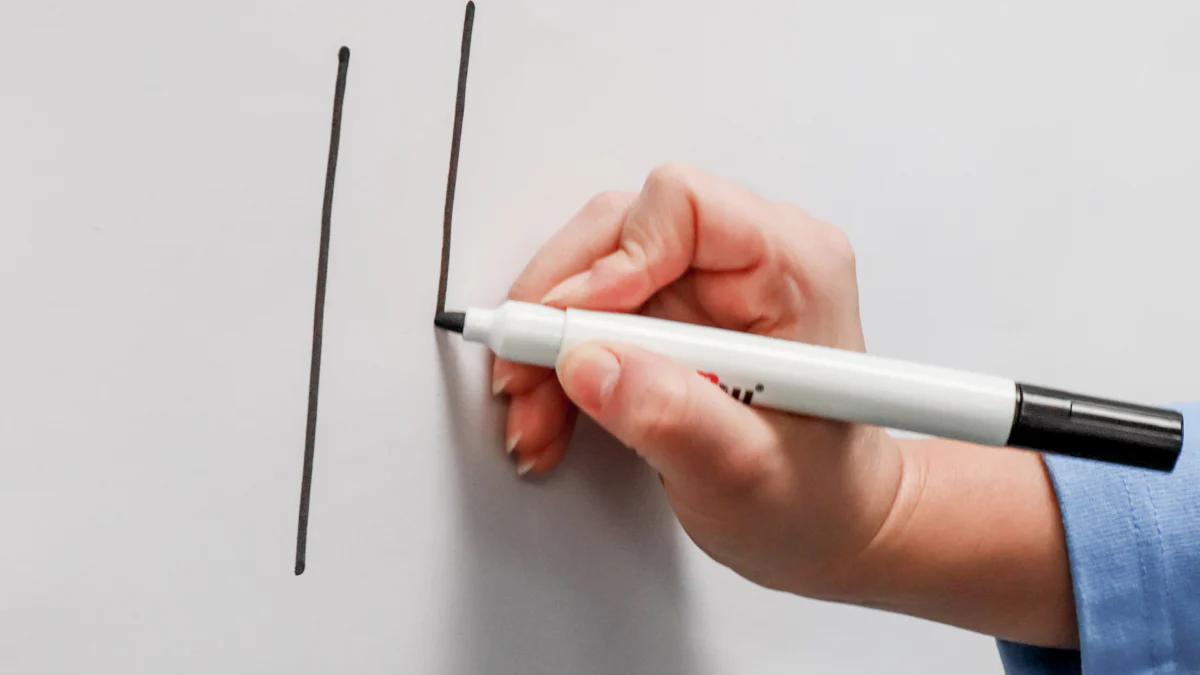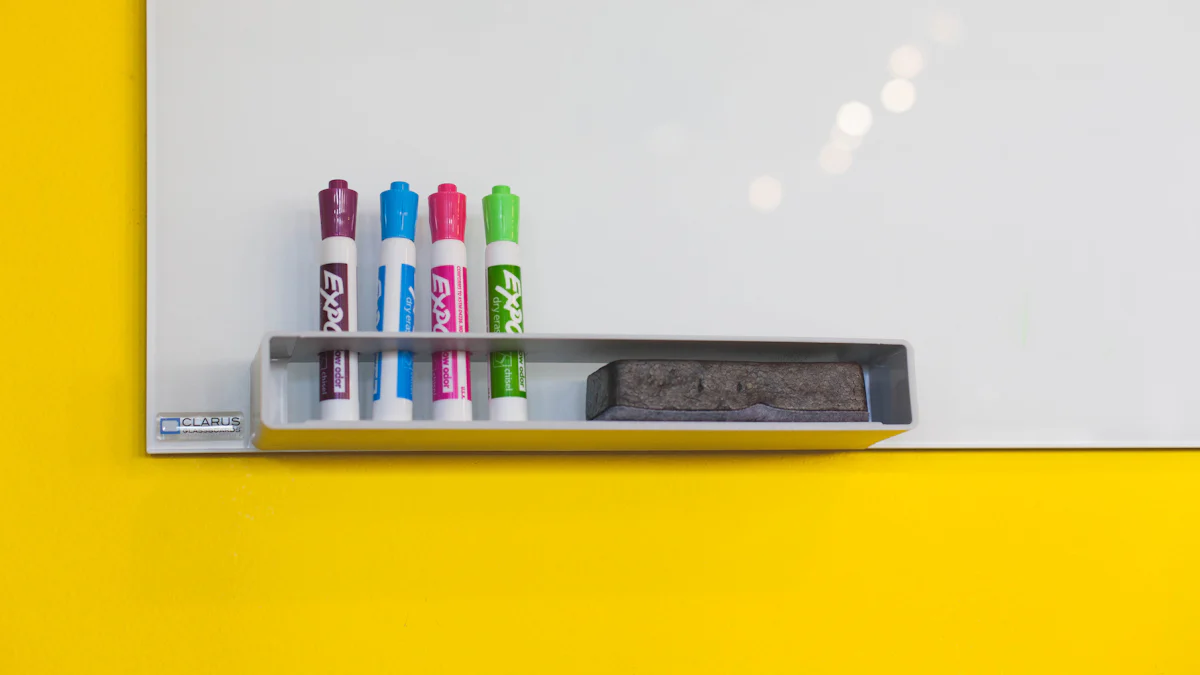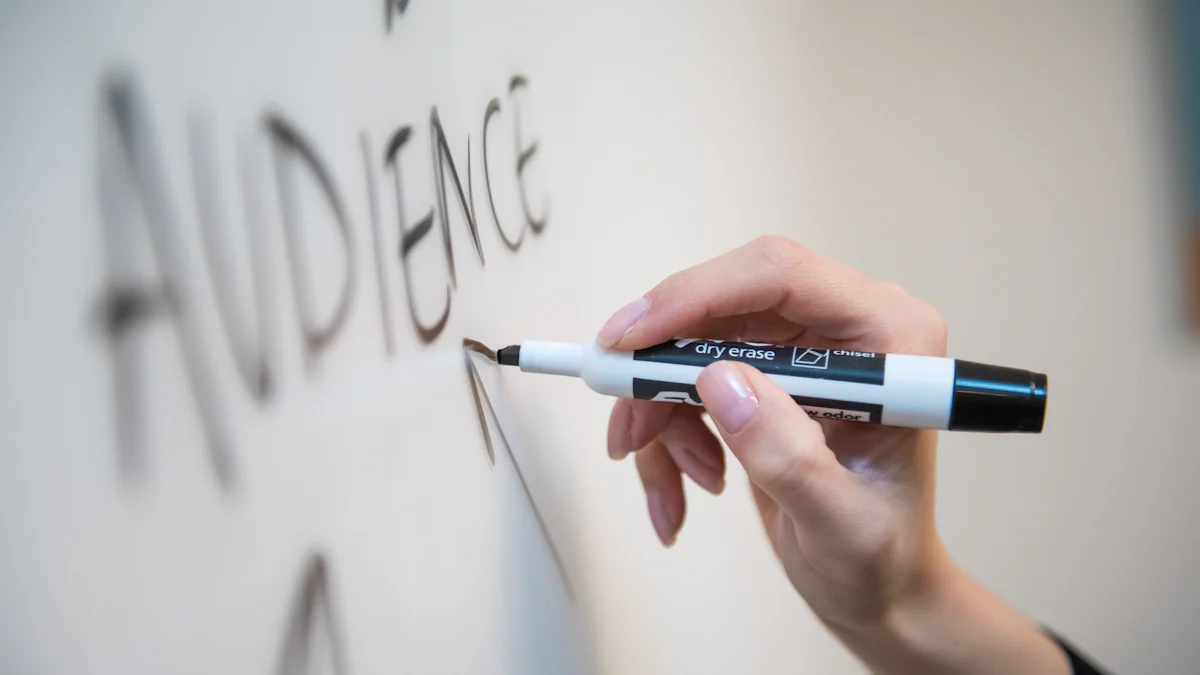
Have you ever wondered why some markings on a whiteboard wipe off easily while others need a damp cloth? It all comes down to the type of whiteboard marker you’re using. These markers are designed differently, and knowing how they work can help you choose the right one for your tasks.
Key Takeaways
- Wet erase markers have ink that dissolves in water. They work well for writing that stays longer on smooth surfaces like glass or laminated paper.
- Dry erase markers are great for short-term notes. Their ink stays on the surface and wipes off quickly with a dry cloth.
- Always make sure your surface works with the marker type. This helps with easy cleaning and prevents damage.
What Is a Wet Erase Whiteboard Marker?

You’ve probably come across markers that don’t wipe off with a dry cloth. These are wet erase markers, and they’re designed for situations where you need your writing to stay put until you’re ready to remove it. Unlike dry erase markers, these require a damp cloth or sponge to clean the surface. Let’s dive into how they work and where you can use them.
How wet erase markers work
Wet erase markers use a water-soluble ink formula. This means the ink bonds more firmly to the surface compared to dry erase markers. When you write with one, the ink dries quickly and resists smudging. However, it doesn’t become permanent. A little water breaks the bond, allowing you to wipe it away cleanly. This makes wet erase markers perfect for creating semi-permanent markings that won’t accidentally rub off.
Common surfaces for wet erase markers
You can use wet erase markers on a variety of non-porous surfaces. These include laminated sheets, glass, mirrors, and plastic boards. They’re also great for overhead projector transparencies, which makes them popular in classrooms and offices. If you’re working on a whiteboard, though, make sure it’s compatible with wet erase markers. Some whiteboard marker surfaces are better suited for dry erase markers, so always check before you start writing.
Tip: Wet erase markers are ideal for charts, schedules, or any display that needs to stay intact until you intentionally erase it.
What Is a Dry Erase Whiteboard Marker?
Dry erase markers are probably the ones you’re most familiar with. They’re the go-to choice for writing on whiteboards in classrooms, offices, and even at home. But what makes them so easy to erase? Let’s break it down.
How dry erase markers work
Dry erase markers use a special ink formula that doesn’t stick to surfaces permanently. Instead of bonding like wet erase markers, the ink sits on top of the surface. This is thanks to a chemical called a release agent, which prevents the ink from soaking in. When you wipe the surface with a dry cloth or eraser, the ink lifts off effortlessly. That’s why these markers are perfect for temporary notes or drawings you need to change often.
One thing to keep in mind is that dry erase markers can smudge if you accidentally touch the writing. So, they’re best for situations where you don’t need your markings to stay in place for long.
Surfaces compatible with dry erase markers
Dry erase markers work best on smooth, non-porous surfaces. Whiteboards are the most common, but you can also use them on glass, metal, and some laminated materials. However, they don’t perform well on porous surfaces like paper or wood. The ink can seep in, making it hard to erase.
If you’re using a whiteboard marker, always check the surface first. Some boards are designed specifically for dry erase markers, ensuring the ink wipes off cleanly without leaving stains.
Note: For the best results, clean your whiteboard regularly. This prevents ink residue from building up and keeps your board looking fresh.
Choosing the Right Whiteboard Marker

When to use wet erase markers
Wet erase markers are your best friend when you need your writing to stay put. They’re perfect for situations where smudging would cause problems. For example, if you’re creating a weekly schedule or a detailed chart, wet erase markers ensure your work stays intact until you’re ready to erase it. These markers are also great for presentations on laminated sheets or glass surfaces. You won’t have to worry about accidental erasing during your meeting or class.
Another great use for wet erase markers is in outdoor settings. If you’re working on a menu board or signage that might get touched or bumped, wet erase ink won’t budge. Just remember, you’ll need a damp cloth or sponge to clean it off later. This makes them ideal for semi-permanent tasks where durability matters.
When to use dry erase markers
Dry erase markers are the go-to choice for quick notes and temporary writing. If you’re brainstorming ideas on a whiteboard or jotting down reminders, these markers make it easy to erase and start fresh. They’re also great for classrooms, where students and teachers often need to update information quickly.
You’ll find dry erase markers especially useful for collaborative work. If you’re in a meeting or group project, you can easily adjust your notes without needing water or extra tools. Just grab an eraser or cloth, and you’re good to go. However, avoid using them on surfaces that aren’t compatible, as the ink might not erase cleanly.
Pro Tip: Always check the surface before using any whiteboard marker. This ensures you get the best results without damaging your board.
Whiteboard markers come in two types: wet erase and dry erase. Each serves a unique purpose.
- Wet erase markers: Best for semi-permanent writing on non-porous surfaces like glass or laminated sheets.
- Dry erase markers: Perfect for temporary notes on whiteboards or smooth surfaces.
Tip: Always match your marker to the surface and durability you need!
Post time: Feb-18-2025


